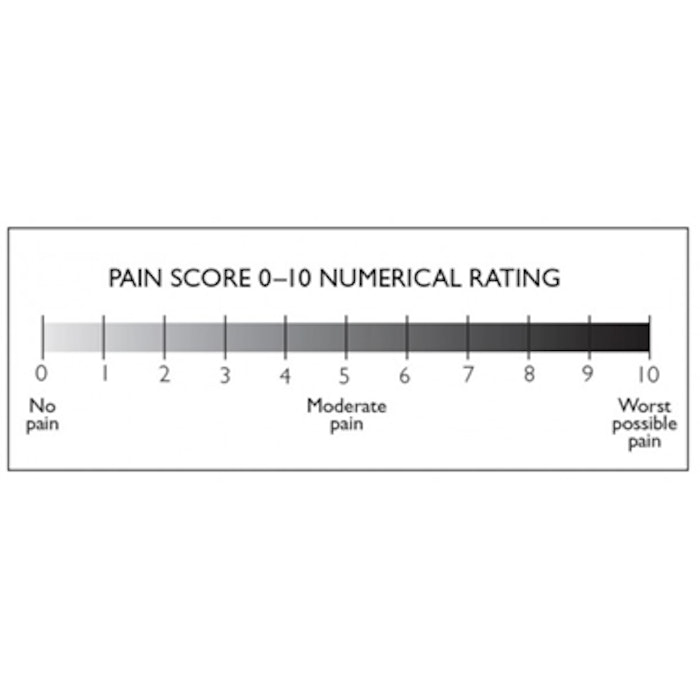
Industry-reported pain levels during energy-based device treatments are often significantly lower than what patients report. Understanding this discrepancy can help clinicians set more realistic expectations and improve patient satisfaction, according to a study published in Lasers in Surgery and Medicine (October 30, 2018).
Researchers Lauren M. Bonati, MD, et al, of SkinCare Physicians in Chestnut Hill, Massachusetts, collected average and mode pain scores from the records of a previously conducted clinical trial investigating a radiofrequency microneedling device at three different settings. They reviewed the trial protocol and device manual to ascertain language regarding procedural pain. Subject‐reported pain scores and verbal pain descriptors from the device manual and trial protocol were translated onto validated pain scales—the Numerical Rating Scale (NRS) and the Verbal Rating Scale (VRS)—for comparison.
After reviewing a total of 90 procedural pain scores from 30 subject charts, the authors found that the average procedural pain scores for three different device settings were 5.3, 6.7 and 4.6 out of 10. The mode pain score was 6 out of 10. This corresponded to a 5–6 and 7–8 on the NRS, respectively, and classification as “painful but bearable” and “considerable pain” on the VRS. Industry-sourced pain levels—gathered from manufacturer materials and personnel—translated to a 2–4 on the NRS and classification as “little pain” on the VRS. The researchers concluded that “Physicians should be wary of manufacturer materials or anecdotal evidence that might mislead patients and cause undue physiological or emotional stress.”
Image: Numerical Pain Rating Scale











